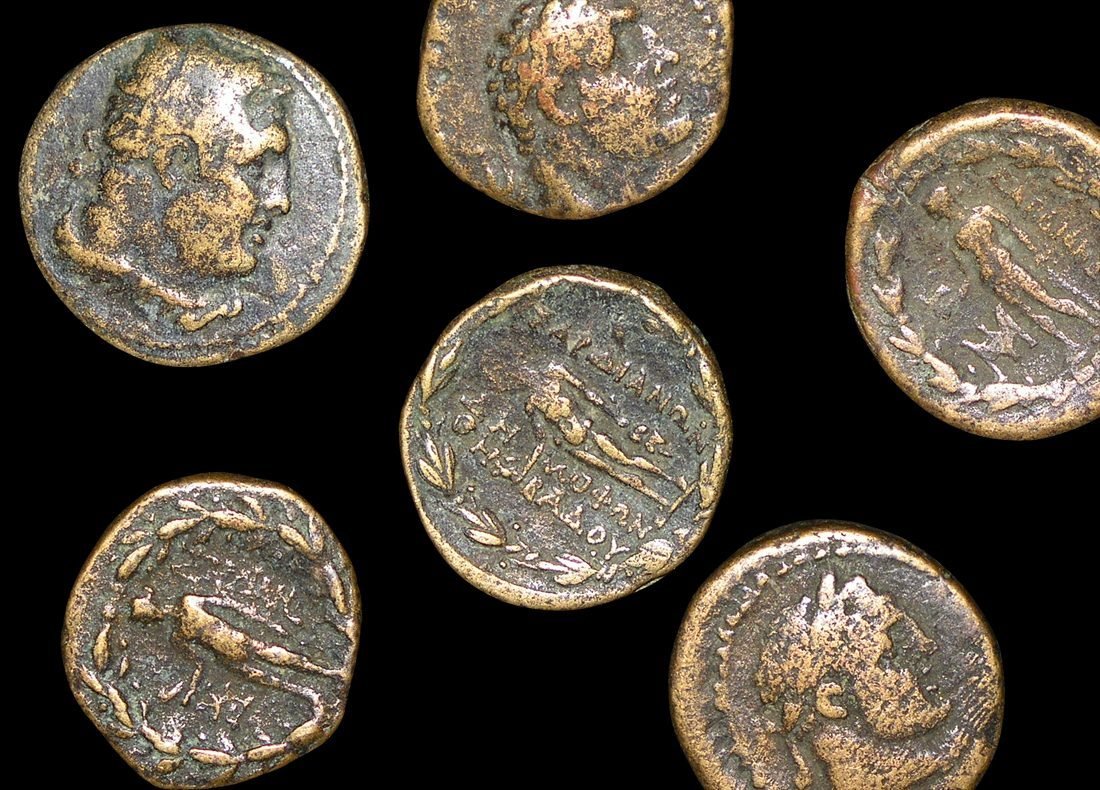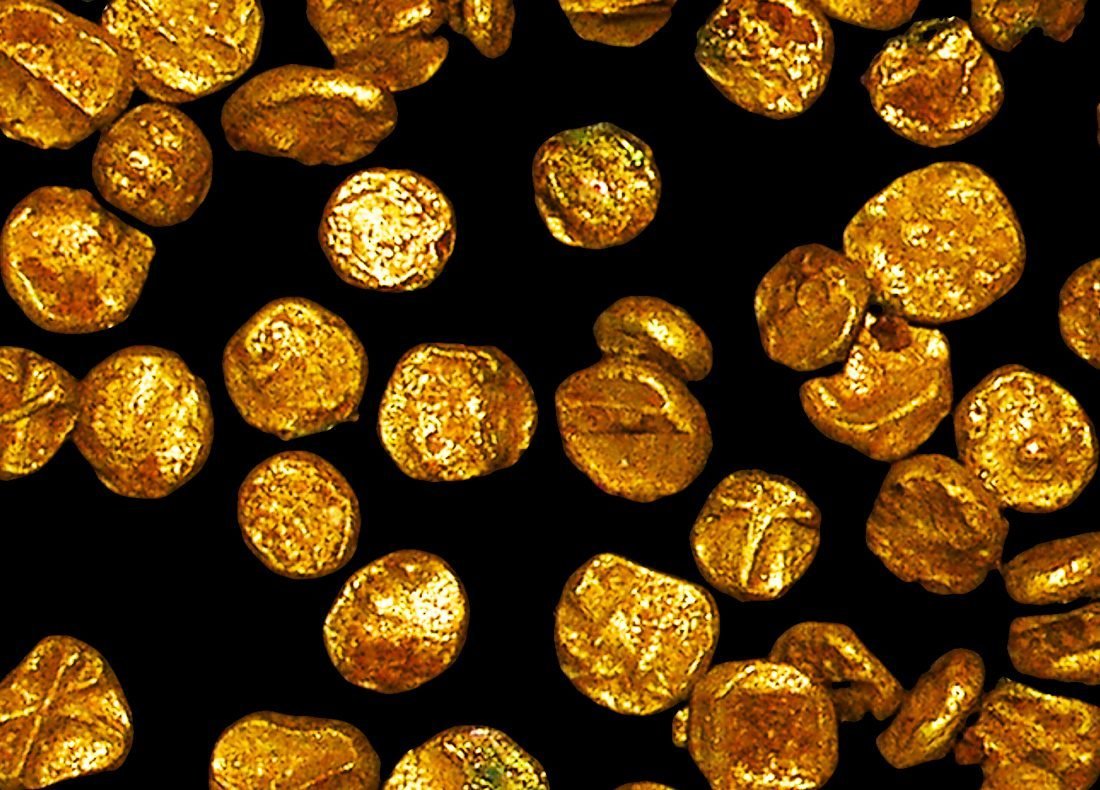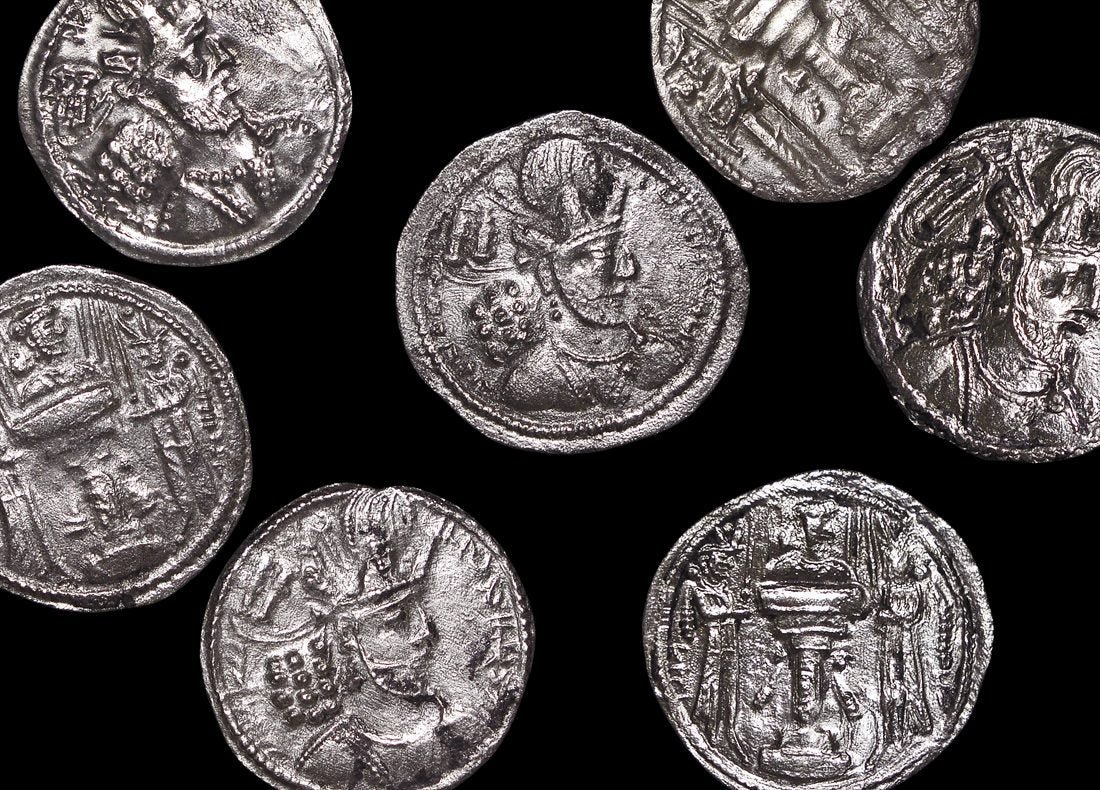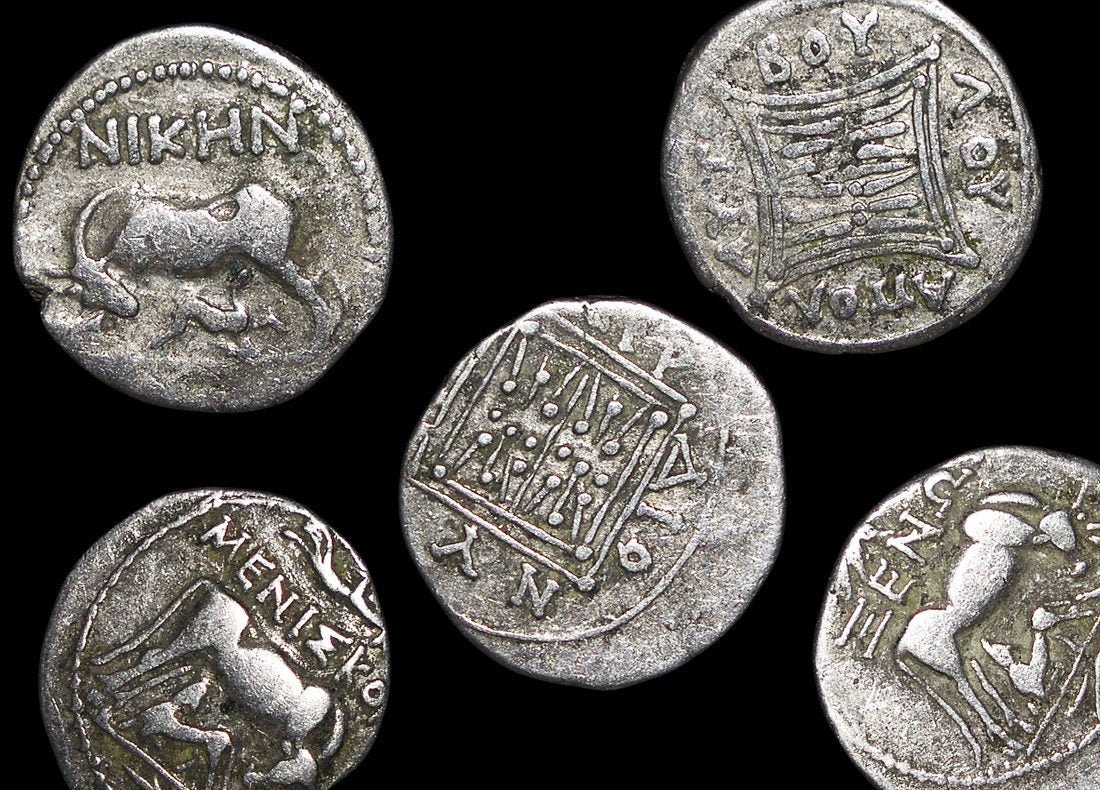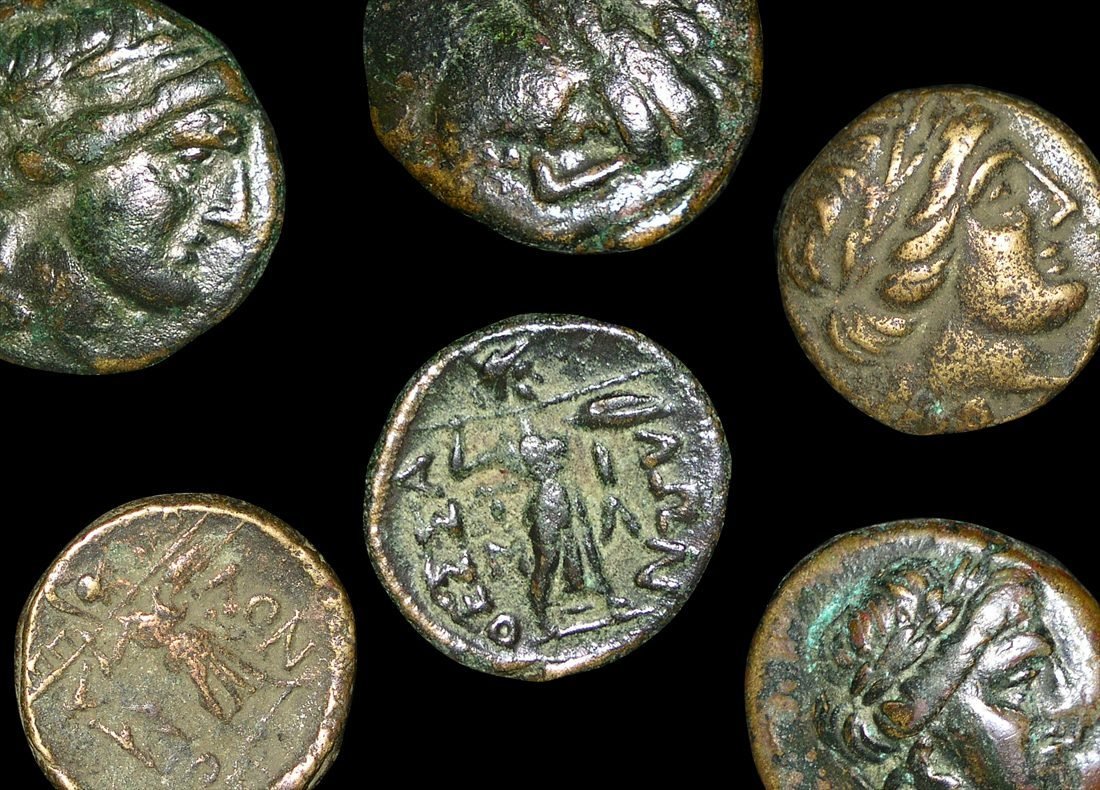Ancient Greece, Asia Minor, Lydia, Sardis, 'Birthplace Of Coinage' (2Nd-1St Century Bce), Bronze Unit
Coins in pictures are examples only.
Gk-Lydia-Sardis Ancient Greece, Asia Minor, Lydia, Sardis, 'Birthplace Of Coinage' (2Nd-1St Century Bce), Bronze Unit(C).
One coin picked at random. The 'Birthplace of Coinage' - Sardis is recognized as the birthplace of modern currency due to its connection with the legendary King Croesus. It was here in the 6th century BCE that metallurgists discovered the art of separating gold from silver. A naturally occurring alloy of the two metals was already in use as currency but its exact purity was always open to question. With this discovery, Sardis now could mint nearly pure silver and gold coins, the value of which could be trusted throughout the known world. This revolution made Sardis rich and Croesus' name synonymous with wealth itself.
Coins in pictures are examples only.
Gk-Lydia-Sardis Ancient Greece, Asia Minor, Lydia, Sardis, 'Birthplace Of Coinage' (2Nd-1St Century Bce), Bronze Unit(C).
One coin picked at random. The 'Birthplace of Coinage' - Sardis is recognized as the birthplace of modern currency due to its connection with the legendary King Croesus. It was here in the 6th century BCE that metallurgists discovered the art of separating gold from silver. A naturally occurring alloy of the two metals was already in use as currency but its exact purity was always open to question. With this discovery, Sardis now could mint nearly pure silver and gold coins, the value of which could be trusted throughout the known world. This revolution made Sardis rich and Croesus' name synonymous with wealth itself.
Coins in pictures are examples only.
Gk-Lydia-Sardis Ancient Greece, Asia Minor, Lydia, Sardis, 'Birthplace Of Coinage' (2Nd-1St Century Bce), Bronze Unit(C).
One coin picked at random. The 'Birthplace of Coinage' - Sardis is recognized as the birthplace of modern currency due to its connection with the legendary King Croesus. It was here in the 6th century BCE that metallurgists discovered the art of separating gold from silver. A naturally occurring alloy of the two metals was already in use as currency but its exact purity was always open to question. With this discovery, Sardis now could mint nearly pure silver and gold coins, the value of which could be trusted throughout the known world. This revolution made Sardis rich and Croesus' name synonymous with wealth itself.


